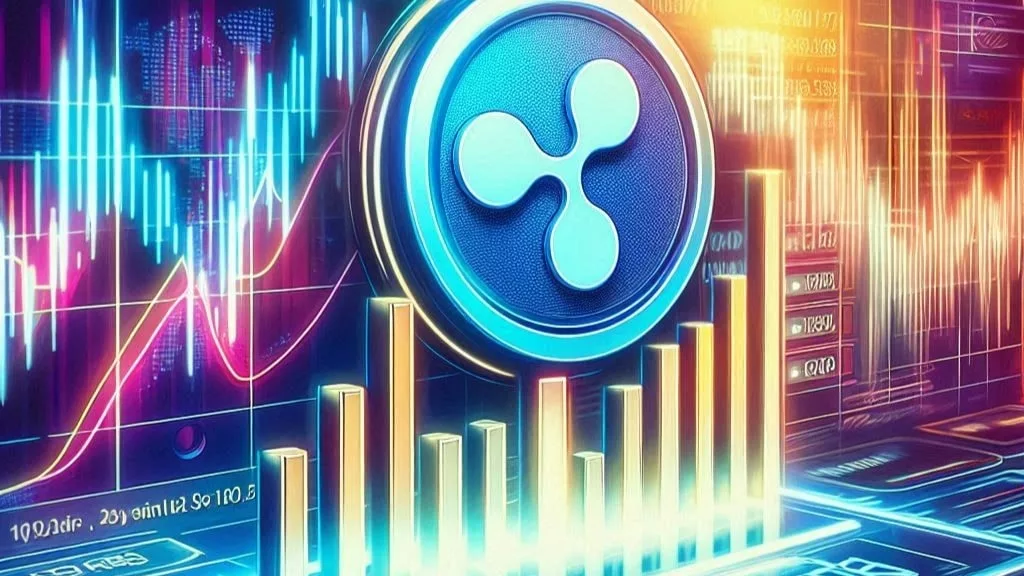The rise of XRP treasury companies has become one of the most closely watched developments in the crypto industry this year. As more corporations begin accumulating XRP as part of their financial reserves, analysts believe this growing trend could have a profound impact on the token’s price. If these treasury programs collectively manage to secure up to 15% of XRP’s total supply, the market could face a sharp reduction in circulating tokens—potentially driving XRP’s value into double-digit territory.
The Growing Wave of XRP Treasury Programs
A notable example leading this movement is Evernorth, a Ripple-backed company that recently revealed its plan to acquire $1 billion worth of XRP. This makes Evernorth one of the largest single corporate participants in the XRP ecosystem. The firm’s intention is to hold XRP as a strategic treasury asset, underscoring growing institutional confidence in Ripple’s payment technology and the XRP Ledger (XRPL).
Evernorth is not alone. Several other firms across the globe have begun establishing XRP treasury reserves in 2025, particularly as regulatory clarity around digital assets improves in the United States and Asia.
In Singapore, Trident Digital Tech Holdings, a NASDAQ-listed company, introduced its own XRP treasury initiative in June 2025. The company aims to raise up to $500 million to accumulate a substantial XRP reserve. Meanwhile, U.S.-based Wellgistics Health partnered with LDA Capital earlier this year to secure a $50 million equity line, which will be used to build an XRP-backed payment system for low-cost business-to-business settlements.
In Japan, Gumi Inc., a prominent gaming and investment company, launched a ¥2.5 billion ($17 million) program focusing on both XRP and Bitcoin holdings. The firm believes these digital assets can serve as reliable long-term stores of value within corporate balance sheets.
Adding to this growing list, Nature’s Miracle Holding became the first publicly traded non-financial company in the United States to create an XRP treasury. The firm committed $20 million to the effort in July 2025. Around the same time, Ault Capital Group, a subsidiary of Hyperscale Data, revealed a $10 million XRP investment to back its decentralized finance lending platform connected to CME futures.
This surge of corporate participation has created a fresh narrative around XRP—transforming it from a payment-focused token into a potential institutional reserve asset.
Estimating XRP’s Price Impact at 15% Corporate Ownership
At the current market price of roughly $2.60, Evernorth’s $1 billion purchase would account for around 383 million XRP—just 0.38% of the token’s total supply of 99 billion. While this may seem small, a scenario where multiple firms continue to accumulate XRP could have a far-reaching effect on market dynamics.
According to projections made using Google Gemini, if treasury companies collectively acquire 15% of XRP’s total supply, that would equal about 14.85 billion tokens—valued near $38.6 billion at current prices. This level of demand would significantly tighten available liquidity, potentially creating a strong supply squeeze.
Gemini’s analysis suggests that such an event could propel XRP’s price between $10 and $15, representing a four- to sixfold increase from today’s levels. The AI-based forecast highlights how removing a substantial portion of the token’s circulating supply can intensify buying pressure and raise the overall market cap from approximately $155 billion to somewhere between $451 billion and $677 billion.
The Economics Behind the Projection
The reasoning behind this optimistic forecast centers on basic market dynamics: when supply decreases and demand remains steady or increases, prices tend to rise. In XRP’s case, large-scale accumulation by corporate treasuries could mirror what has historically occurred with Bitcoin and other scarce assets—where institutional adoption gradually drives value upward.
Moreover, Gemini noted that this current setup appears stronger than the market environment that pushed XRP to its previous all-time high of $3.84 in early 2018. Back then, price growth was mainly fueled by retail speculation. In contrast, today’s potential accumulation is being driven by real-world utility, corporate adoption, and regulatory progress—factors that tend to create more sustainable market cycles.
If treasury firms indeed hold XRP as part of their long-term reserves, it could reinforce the asset’s credibility and attract more institutional players. This would not only limit the available liquid supply but also reduce market volatility, further appealing to traditional investors seeking stability within the crypto sector.
Institutional Confidence in Ripple’s Ecosystem
The renewed corporate interest in XRP also reflects broader confidence in Ripple’s technology stack and partnerships. Ripple has long positioned XRP as a bridge currency for cross-border settlements, offering faster and cheaper transactions than traditional banking systems. With many institutions now exploring blockchain-based payment systems, XRP’s established infrastructure makes it an attractive choice.
As regulations surrounding digital assets become clearer—particularly in the U.S.—more corporations are expected to follow the treasury model, treating XRP similarly to how firms have approached Bitcoin in recent years. This movement not only increases liquidity usage on the XRP Ledger but also deepens market maturity.
Could Corporate Accumulation Be XRP’s Next Catalyst?
While the $10–$15 projection remains speculative, the concept of large-scale treasury accumulation provides a realistic framework for understanding XRP’s future price potential. If a growing number of companies continue integrating XRP into their operations, payments, or financial reserves, the cumulative effect could reshape the market structure altogether.
For now, XRP continues to trade near $2.60, but the sentiment among long-term holders and institutional investors appears increasingly positive. The involvement of Ripple-backed entities, healthcare companies, financial firms, and public corporations underlines a shift in how XRP is perceived—from a transactional asset to a reserve-grade instrument.
If this trajectory continues, XRP’s next major price movement might not come from retail enthusiasm or short-term speculation, but from structured, large-scale corporate participation. Such a development would not only validate XRP’s role within global finance but also reinforce its long-term position as one of the few digital assets bridging the gap between blockchain technology and traditional treasury systems.
Post Views: 52
